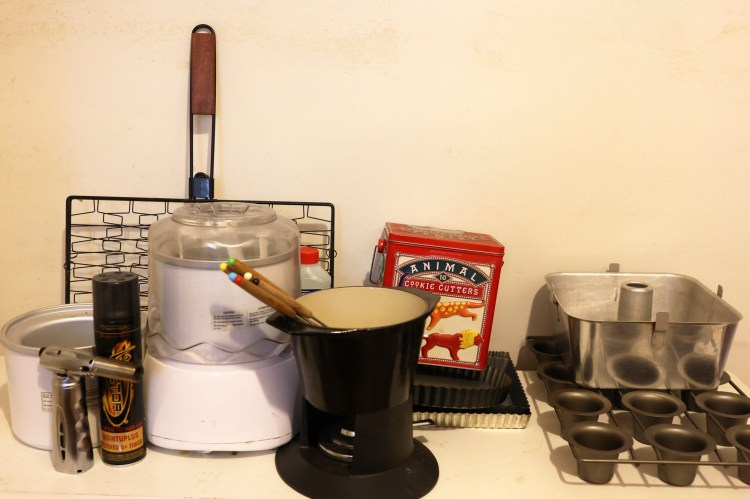I believe this is my 450th Green Plate Special column. I write it from a place of deep gratitude because it has served as the launching pad for many things, both professionally in the world of food writing and personally in the realm of my own kitchen.
The idea for this long-standing feature – looking at some aspect of eating sustainably, grounding it in a recipe, and illustrating it with a lovely photo – was not mine. Green Plate Special first appeared in the inaugural issue of Source, a now defunct section of this newspaper launched in April 2014 and dedicated to stories about living sustainably in Maine. Until editor Peggy Grodinsky asked me to take it over in June of that year, she wrote it.
At the end of July 2023, Green Plate Special will be taking another turn, this one involves making it a monthly dispatch about sustainable eating trends throughout the United Kingdom where I’ll be traveling around (primarily by public transport) with my husband, a professor on a year-long sabbatical.
As I sort through what’s stored in both my kitchen and my office to make space in the cupboards and bookshelves for our renters’ belongings and sort through boxes in the basement and attic, I’ve realized just how much stuff I have. It struck me that sharing with friends and neighbors some of the more specialized cooking equipment I know, and trust, might be more useful than putting it all boxes to go unused for a year. After all, it’s wasteful to buy brand new gear if existing gear can easily be had.
If my neighbor wants to try his hand at crème brûlée, why should he run out and buy a small blow torch while mine sits idle in a box in my attic? If my daughter needs a high-speed blender for morning smoothies in her East Harlem sublet, why can’t she use mine? Why should my friend return the vintage angel food cake pan she borrowed last month to make an orange chiffon only to have it go unused for the next 15 months?

The last step in making the gazpacho is pouring the pureed fruit and vegetables through a fine-mesh strainer to catch any stray seeds or vegetable skins. Ben McCanna/Staff Photographer
Sharing is caring for the environment. And that’s the impetus behind Christine’s Library of Kitchen Things lending operation. According to a 2017 article in The American Libraries Magazine, public libraries have been lending out things other than books since 1904 when the Newark (New Jersey) Public Library had a wall of framed paintings patrons could check out for a period of time. In Maine, the public libraries in Bangor and Brunswick both have Library of Things programs that offer items from acoustic guitars and adjustable tripods to yogurt makers and zipper garden tools.
The modern Library of Things movement has been making waves since about 2010 and was spurred on by other non-profit organizations that focused on lending gardening, household, and light construction tools (like the one on Washington Street in Portland), gently used toys and musical instruments. It’s a model that challenges people to rethink whether they need (or want) to own goods they rarely use. It also brings people together around a shared vision and reduces wasted resources. There are even computer programs like one called MyTurn that makes tracking who has which goods at what time easy.
Because I must keep the kitchen operational for our renters, the Kitchenaid Mixer, the Cuisinart food processor and all the cast iron pans must stay put. But that still leaves the pasta makers (both the hand crank one and the Kitchenaid ravioli attachment; cake pans in the shapes of ducks, lambs, pops and hearts; an ice cream maker with two inserts, several tart pans with removable bottoms; a full-sized fish poacher; and madeleine and financier molds. That’s just a partial list, folks. But I think I’ve made my point.
Let me know if you’d like to borrow something.

Smooth and Spicy Strawberry Gazpacho. Ben McCanna/Staff Photographer
Smooth and Spicy Strawberry Gazpacho
This is a recipe based on one that used to be served at the award winning Eleven Madison Park restaurant in Manhattan. I’ve changed it up a bit to accommodate some of the staples that happen to be in my pantry and made it a little less fiddly to prepare.
Serves 4-6
2 cups day-old bread croutons
6 cups roughly chopped strawberries
2 ¼ cups diced English cucumbers, diced
1 ¼ cups diced red bell pepper
3/4 cup diced green bell pepper
1 medium tomato, diced
1 large garlic clove
1/2 jalapeno pepper, chopped
3 tablespoons red or white wine vinegar
1½ teaspoons salt
Olive oil
Fresh thyme leaves, finely diced cucumbers and strawberries for garnish
Combine 1½ cups of the croutons, the strawberries, cucumbers, peppers, tomato, garlic, jalapeno, vinegar, salt and ½ cup olive oil in a large bowl. Cover and refrigerate for 2 to 6 hours.
Working in batches, puree the mixture in a blender until smooth. Push the puree through a fine-mesh strainer to remove any seeds or skin remaining.
Chill soup for an hour before serving garnished with a swirl of olive oil, and a smattering of thyme leaves, and finely diced cucumbers and strawberries.
Copy the Story LinkSend questions/comments to the editors.



Success. Please wait for the page to reload. If the page does not reload within 5 seconds, please refresh the page.
Enter your email and password to access comments.
Hi, to comment on stories you must . This profile is in addition to your subscription and website login.
Already have a commenting profile? .
Invalid username/password.
Please check your email to confirm and complete your registration.
Only subscribers are eligible to post comments. Please subscribe or login first for digital access. Here’s why.
Use the form below to reset your password. When you've submitted your account email, we will send an email with a reset code.